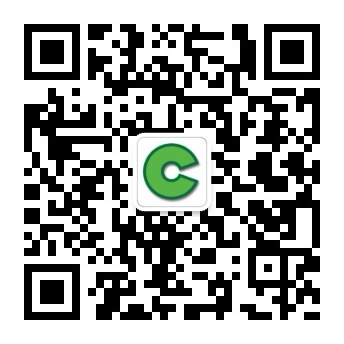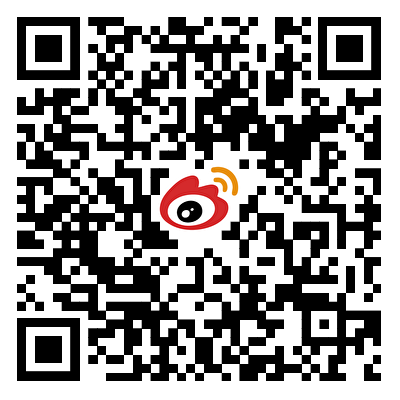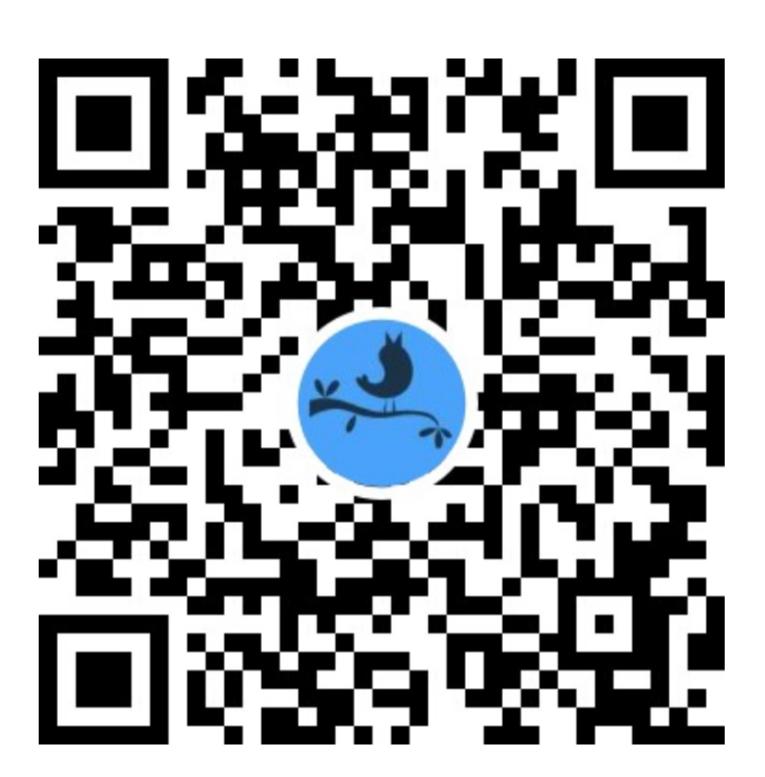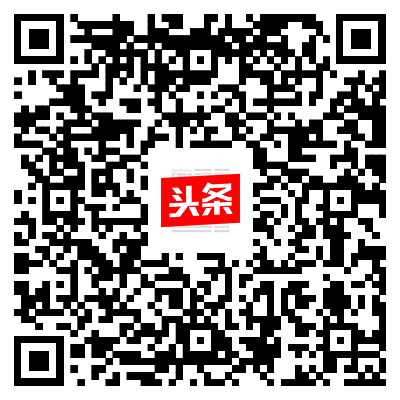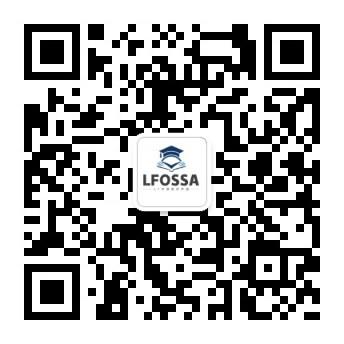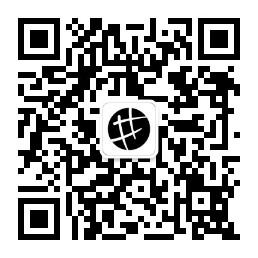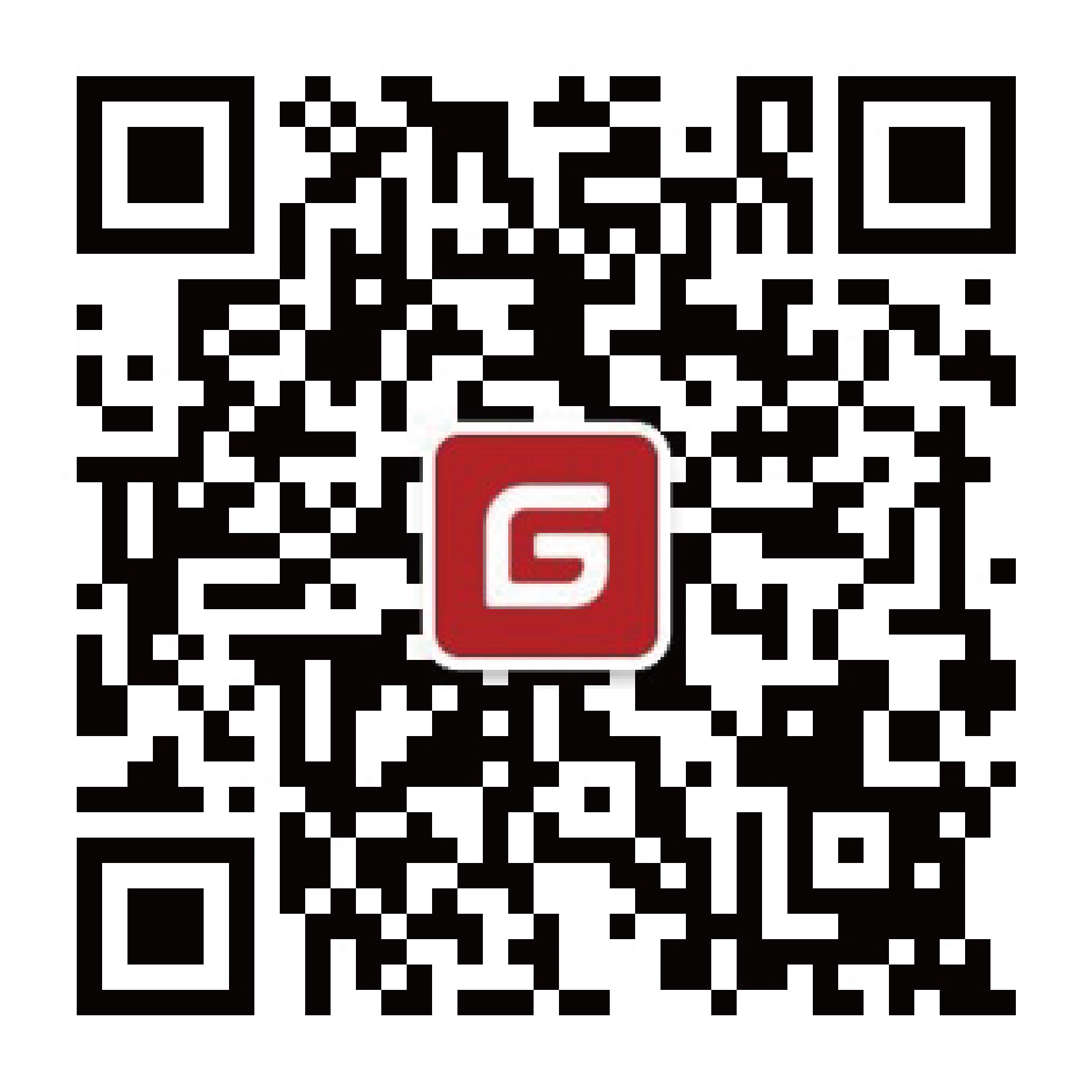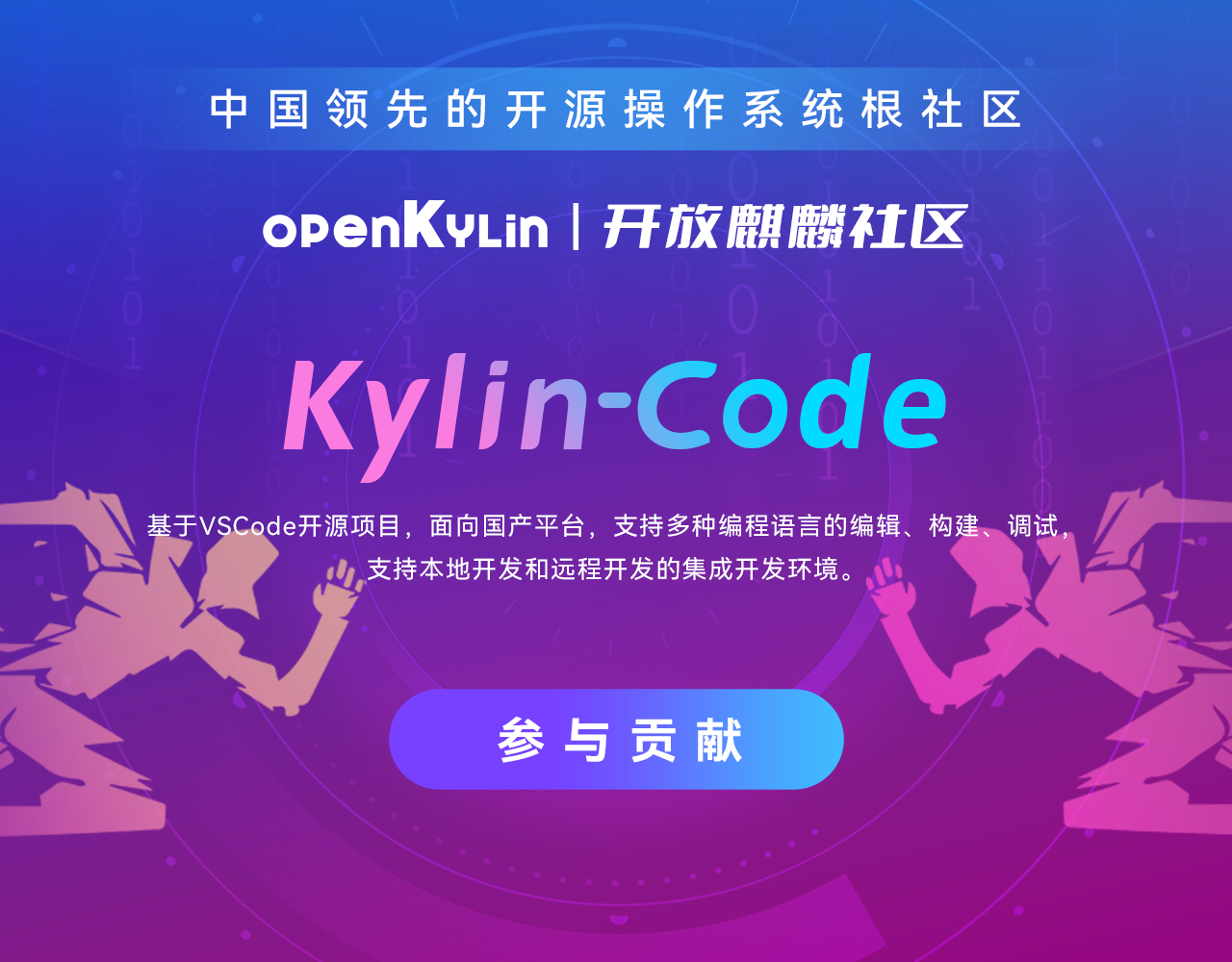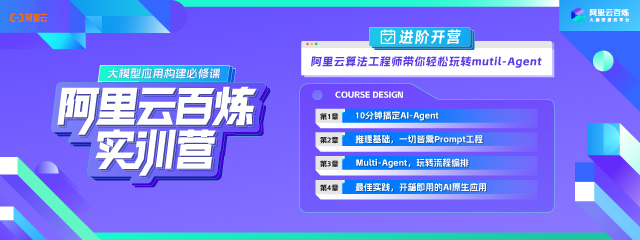I believe there is no need to repeat how great Apple Inc. is. However, the greatness here refers to the revolutionary subversion of the industry with products and ideas, Not for open source 。
On the contrary, to some extent, Apple is almost the opposite of open source. This "closure" in the bone is determined from the moment of the birth of Apple.
In 1976, when two founders (Steve Jobs and Wozniak) founded Apple in the garage, they did not expect that their differences would be so great. Wozniak is a typical engineer. When he showed Jobs the circuit board that was later called Apple I, and Jobs used his amazing business talent to push Apple II into a "blockbuster" It is doomed that Wozniak's engineer quality can only be inferior to Jobs' talent.
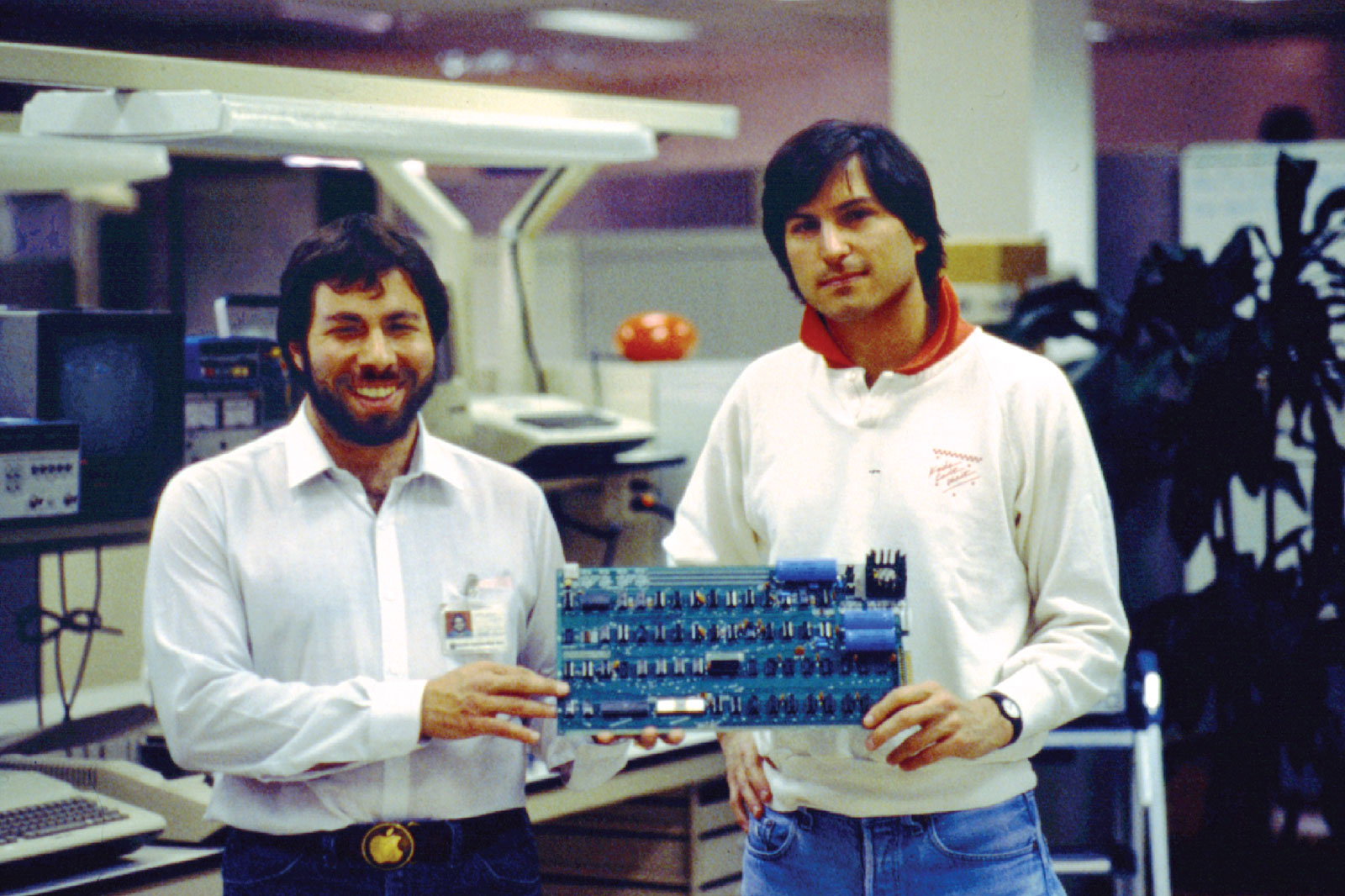
Apple's two founders hold Apple I in their hands, with Jobs on the right and Wozniak on the left
In the early days, Apple only sold hardware. In order not to let other companies' software "spoil" their own hardware, Apple quickly developed its own system; In order to prevent users from damaging and refitting, Apple products cannot be disassembled without authorization, computers cannot be inserted with expansion cards, iPhones cannot change batteries, and special screws are used to "guard against theft". So far, an Apple company has arranged the entire industry chain, from electronic parts to sales outlets, which are its business scope. No matter hardware, software or content, they are under its control.
In addition to the unique completely closed ecological business model, Apple also prevails in a strict "confidentiality system", which means that employees are dismissed or even face litigation if they leak secrets.
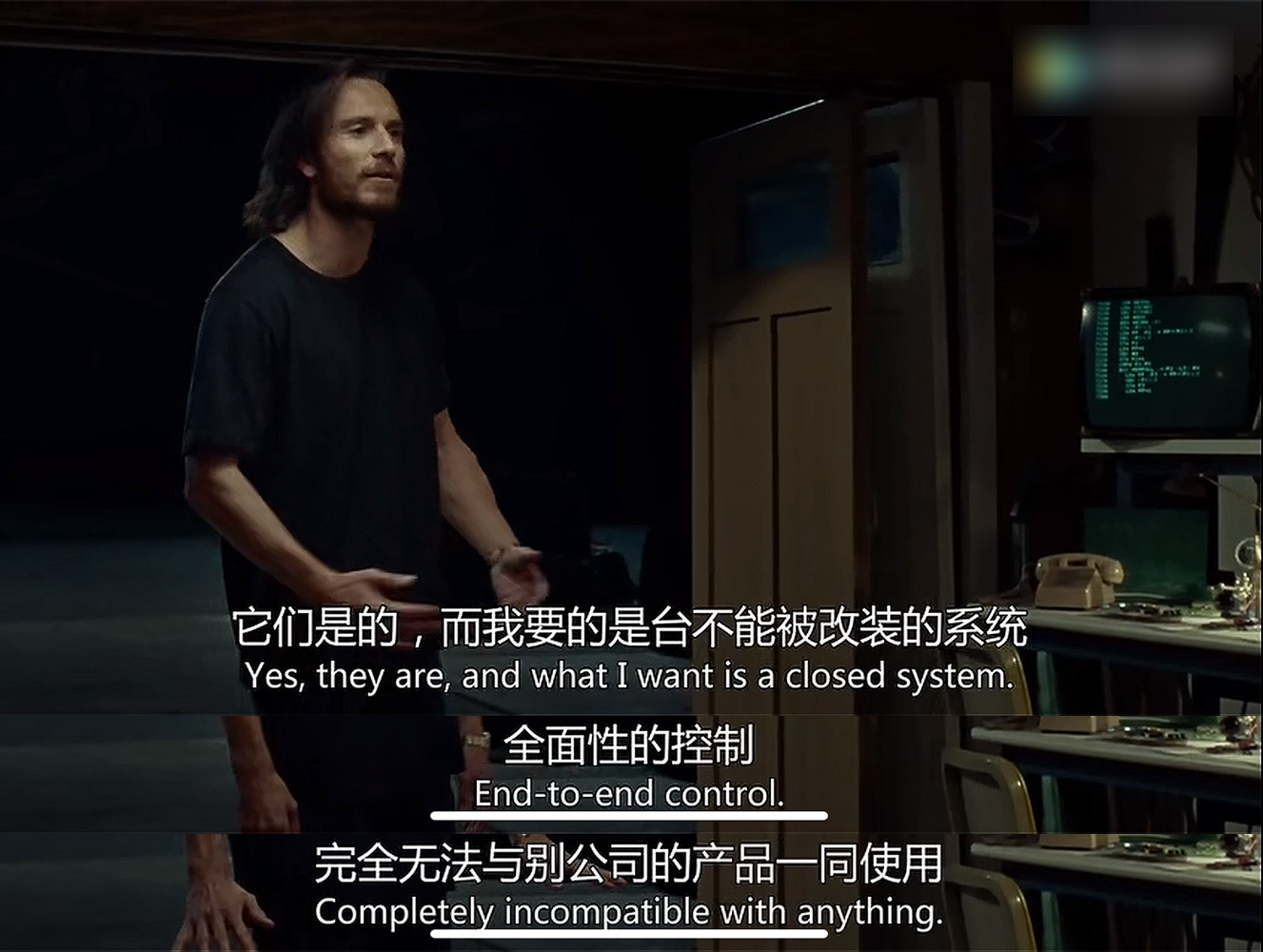
Steve Jobs, played by French Shark in the film Steve Jobs, is explaining his "closed" concept
Is Apple really only closed? Of course not. Apple has actually participated in and contributed to open source. On December 9, 2021, Apple launched a redesigned website , including six independent open source projects Swift, WebKit, FoundationDB, ResearchKit, CareKit, Password Manager Resources, and other projects contributed by Apple.
Yes, even in the era when open source was called a "cancer" by Microsoft, Apple did not oppose open source so radically, it just In a tactful and shrewd manner To handle the relationship with open source.

In short, open source is more like a kind of Tools and means for its use and purpose 。 Open source is trying to build an open and collaborative technology environment with its own values, but when capital begins to "flexibly" recruit, integrate and incorporate open source by means of absorption, refining, utilization, transformation and other means, "alienation" is inevitable. Apple is the representative of such capital.
In essence, open source is more of a Culture and belief Is to use the power of the community to build a fully open technology ecology. Apple's open source does not involve this deep level of "ideal", but has been "instrumental" open source. Is this open source really what we want?
Part I: Darwin, Jobs' Revenge Derivative
"Do you want to sell sugared water all your life, or do you want to change the world with us?"
When Jobs invited John Sculley, the CEO of PepsiCo at that time, to join Apple, he certainly did not expect that he would be kicked out of the company that he led by Sculley.
On September 16, 1985, when Jobs resigned from Apple, he submitted company registration documents for NeXT. Jobs exchanged his shares for $70 million, leaving only one share to attend Apple's shareholders' meeting. This money has also become the venture capital of NeXT Computer Company and Pixar Animation Company. Among them, NeXT What he did became the weight of Jobs' return to Apple.
In 1988, NeXT Company launched NeXT computer, which uses NeXTStep Is the operating system. At that time, NeXTStep was a quite advanced system. Based on the Mach kernel and Unix (BSD), it used PostScript to provide high-quality user graphical interfaces, and provided a complete object-oriented environment in Objective-C language.
In addition, NeXTStep operating system proposed the concept of Dock or Taskbar and a series of concepts on modern GUI interfaces, such as real-time scrolling when dragging windows, the concept of colored icons, and the prompt function when modifying files. It also pioneered the modern GUI editor and had a profound impact on the entire computer world.
The foundation on which NeXTStep is based—— Mach and BSD are open source.
But NeXT didn't make any money for Jobs. Instead, NeXT worked with Pixar Animation to clean up the $70 million that Jobs got from selling Apple shares. When Jobs could hardly stand it, it was lucky that Pixar Animation's Toy Story was a hit, and it was able to return to life; Since 1992, NeXT has authorized other hardware manufacturers to use NeXTStep system because of poor hardware sales. In 1993, NeXT stopped its loss making hardware business and began to concentrate on software market development.

The founding team of NeXT, Jobs in position C
On December 20, 1996, Apple began to acquire NeXT, including all intellectual property, technology and software developers. On February 7, 1997, the acquisition was completed at the price of 429 million US dollars and Jobs obtained 1.5 million shares of Apple stock. At the same time, Jobs replaced the then CEO Amelio, and the king returned.
These 11 years are not only Jobs' dormant period, but also Apple's. When it decided to acquire NeXT in 1996, Apple had fallen into a management dilemma. Its computer market share had fallen from 16% at its peak to 4%, and its stock had never recovered.
On the face of it, Apple is buying an operating system that can replace the old Mac OS; But in fact, Apple is recalling Jobs. After his return, Jobs immediately stopped the Newton project led by Sculley and continued to promote his idea of "Think Different". After that, let's look at it again. It's like a Steve Jobs The story of revenge 。
The operating system developed by NeXT is the most powerful weapon in this revenge.
After the acquisition of NeXT, Apple began to develop Mach based MacOS successors, upgraded the Mach kernel from 2.5 to 3, and extended it using the concepts and components in the FreeBSD kernel to form a XNU The kernel of. On this basis, Apple has Darwin, the first open source project in the company's history It has BSD, a very pure open source pedigree (mainly FreeBSD). It is a completely open source operating system, homologous with Apple's own commercial systems.
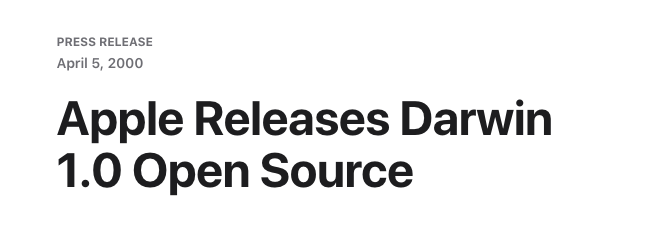
https://www.apple.com/newsroom/2000/04/05Apple-Releases-Darwin-1-0-Open-Source/
For this reason, Apple has specially hired Jordan Hubbard, one of the founders of FreeBSD, to take charge of the BSD technical team (in fact, at the beginning, Apple liked Linus Torvalds, the father of Linux, but Linus refused). Later, Hubbard became the head of Apple's Unix technology department, 12 years of youth for Apple 。
In addition, Apple has designed a special model for Darwin called APSL(Apple Public Source License) This open source license has not only been recognized by OSI (Open Source Initiative), but also by FSF (Free Software Foundation) as a "free software license".

Comparison between APSL and several mainstream open source licenses
What's going on? Did the apple change its nature? Not closed? Of course not. This is just the first step for Apple to use open source. As Bradley Kuhn, then vice president of FSF, commented earlier:
They clearly have some interest in helping certain Free Software projects (such as GCC and GDB), but I don't think they are really dedicated to the goal of software freedom. For them, it's likely only a pragmatic necessity that leads them to support some Free Software projects.
They (Apple) are obviously interested in helping some free software projects (such as GCC and GDB), but I think they are not really committed to the goal of software freedom. For them, supporting some free software projects is only because of a practical need.
At that time, Bradley Kuhn was very welcome to see that Apple, which has always been known as "closed", began to allow internal employees to participate in open source. But as he said, Apple is not doing all this for "free software".
First of all, Darwin's open source has not disrupted Apple's existing business model and market advantages. Apple does not sell software or services, but machines. Open source of an operating system Kernel is not a big deal. After all, open source is not what Apple always values Aqua GUI, As for GUI, if you want to imitate Apple, you can sue for bankruptcy.
Secondly, the reason why Apple mixed free software is that free software is really easy to use. For example, The subversive Mac OS X is based on the BSD versions of NetBSD and FreeBSD. BSD brings multitasking to the Mac and allows the migration of a large number of Unix and BSD applications to them. As a result, Mac has begun to get rid of the position of creative artist tool and become a more general system, which has been used by more and more families And small businesses.
besides, Apple (actually NeXT) also uses the GCC compiler developed by Richard Mattew Stallman (the initiator of the free software movement).
Some people believe that Apple's introduction of the open source BSD subsystem (mainly including FreeBSD, and a few OpenBSD and NetBSD) is the essence of Mac OS X: on the one hand, it provides compatibility with various industry standards, and on the other hand, it ensures system security.
However, Apple did not take good care of the Darwin derived from this open source.
As a separate product, Darwin did not gain much popularity. In April 2002, Apple established OpenDarwin. org (a community to assist in the development of Darwin). This community can create and release its own Darwin operating system, and provide resources for open source developers to interact with and produce products for Apple's Mac OS X. But soon, the OpenDarwin project was closed on July 25, 2006 as Apple strengthened its control over OS X components.
It is known that when the OpenDarwin team announced the closure of the project, OpenDarwin has "become a managed tool for Mac OS X related projects only". They tried to create an independent Darwin operating system, but failed.
The availability of fewer sources, poor interaction with Apple representatives, difficulties in establishing and tracking sources, and lack of interest in communities should all be responsible.
Today, we can no longer find Darwin on Apple's official open source website. Instead, a project named UNIX has been listed in the corner of the open source project website.
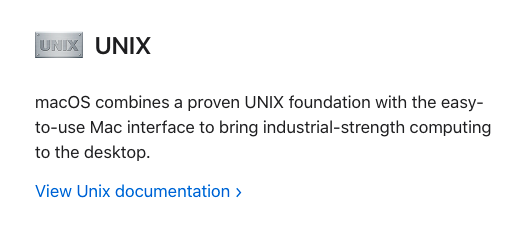
https://developer.apple.com/opensource/
Third, Apple's open source action has brought limited benefits to the open source community, but on the contrary, it has squeezed a lot of resources. On the one hand, Apple continues to learn and innovate from the BSD world in the name of open source; On the other hand, from 2001 to 2013, Jordan Hubbard, an important figure in the FreeBSD community, was difficult to work for Apple Give consideration to both To FreeBSD, this more or less brings disadvantages to the development of FreeBSD. ( For details, please refer to: FreeBSD's Big Lose )
Finally, Apple's feedback to the upstream of open source is not enough. According to FreeBSD Foundation record In 2021, Apple donated between 1000 and 4999 dollars to the foundation. Of course, adhering to the noble character, FreeBSD's core contributors are Asked Apple did not blame Apple for its lack of enthusiasm in contributing to the upstream.
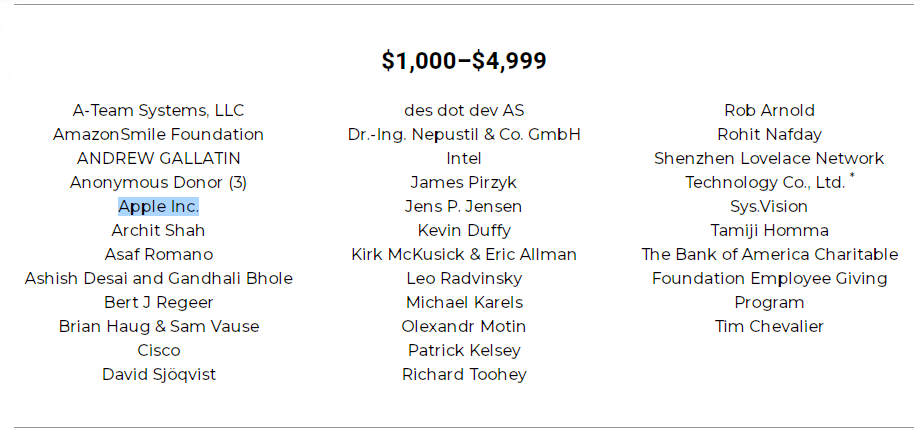
In addition, there was an interesting story last year, which is enough to show that Apple despises the use of open source projects.
In November 2021, Daniel Stenberg, the founder and chief developer of curl publish I wrote a blog complaining about Apple because when a user asked Apple for help, Apple replied directly to the user and asked him to contact curl himself.
Imagine a company with a market value of trillions of dollars applying various open source components to its products and earning billions of dollars in profits every year. When a user of the company asked for help with its products, the company pushed the user to open source projects. This open source project is operated and maintained by volunteers, and the company has never sponsored a penny.
There is no doubt that Daniel is quite dissatisfied with Apple's practice, because it has not made any contribution to the project, but when others ask for help, he puts the problem on himself, which is undoubtedly regarded as Free tool man 。
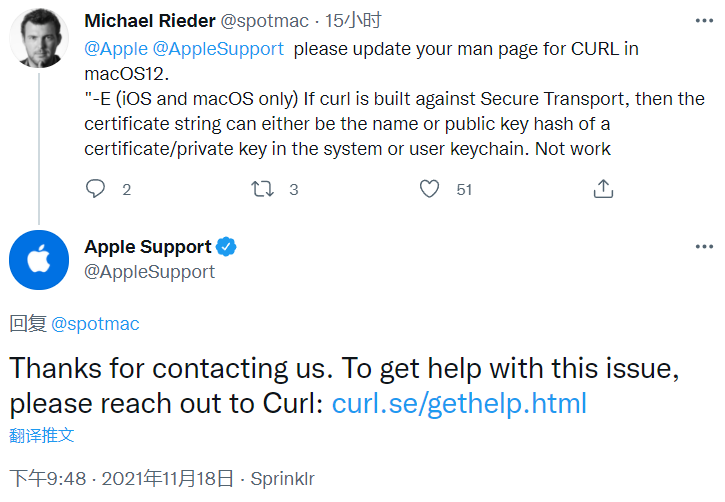
After the OpenDarwin project is closed, PureDarwin As its unofficial successor. This community is committed to making Darwin more usable, but in fact, it has no official relationship with OpenDarwin. The project saved by the community has nothing to do with Apple.
After Darwin's failure, Apple did not stop its action on open source, but took its use, control and compilation of open source to a new height. Please look forward to the next issue: Apple has open source, but what about it? (middle) WebKit (click to view)









